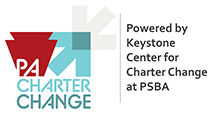Virtual schools saw little disruption, got equal virus aid
While many schools scrambled to shift to online classes last year, the nation’s virtual charter schools faced little disruption. For them, online learning was already the norm. Most have few physical classrooms, or none at all. Yet when Congress sent $190 billion in pandemic aid to schools, virtual charters received just as much as any other school because the same formula applied to all schools, with more money going to those in high-poverty areas, an Associated Press investigation found. “It’s scandalous that they’re getting that much money,” said Gordon Lafer, an economist at the University of Oregon and school board member in Eugene, Oregon. “There were all kinds of costs that were extraordinary because of COVID, but online schools didn’t have any of them.” The infusion of federal relief has inflamed a decades-long debate about the role of the nation’s 200-plus fully virtual charter schools, which are publicly funded schools that operate independently or under the umbrella of public school districts. They generally offer classes through online learning platforms provided by private companies. Leaders of online schools say virtual charters offer a valuable option for students who don’t do well in traditional classrooms. But critics say they drain money from other schools and often lead to poor outcomes for students.
Click here to read more.
